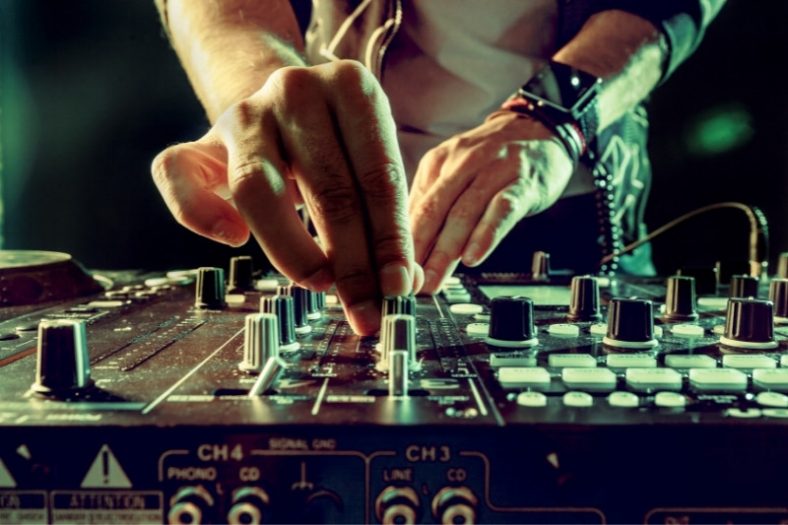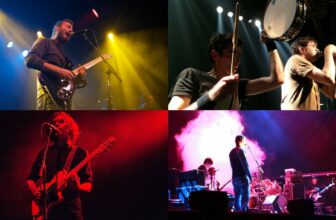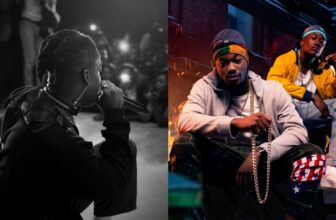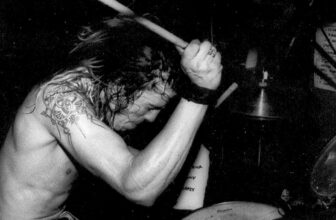What Is Deep House Music?

Deep house music falls into the category of electronic dance music and is a subgenre of house music. It has influences from Chicago house as well as soul music, jazz-funk, and garage house.
Deep house is one of the most popular types of house music and one of the most popular types of electronic music overall.
With a laid-back style created by jazz chords, muted basslines, concentrated melodies, and soulful vocals, along with a relatively slower rhythm, deep house is considered the musical embodiment of cool intimacy.
But what is deep house music exactly, what is the story behind it, and what are the things that make this genre unique and so popular? This article will explain everything in detail that you need to know about Deep House music.
Contents
History of Deep House Music
The roots of deep house music can be found in the mid-1980s in the compositions of producers such as Larry Heard and Marshall Jefferson, who are the pioneers of the genre. They gave Chicago house music a human touch by implementing jazz elements to the compositions along with deep bass lines.
Especially the 1985 song Mystery of Love by Larry “Mr. Fingers” Heard draws the lines of deep house, which later inspired many other deep house songs. The song sounded different from the existent electronic dance music tunes with its groovy elegance that was considered other-worldly.
Another important step was the 1987 song, Strings of Life by Derrick May. The song had similar characteristics to the previous deep house hit Mystery of Love with its jazzy chords played by piano samples, melodies created by strings, and its relatively slower rhythm. The name, deep house, started to get more popular among E.D.M. lovers during these days. However, it was still an underground genre without considerable fame.
With more people getting interested in the sound, it started to be more apparent during the ’90s. Many DJs started composing deep house tunes implementing innovative sounds to their compositions from different genres such as jazz, disco, and underground music – which all became characteristics of deep house music.
At that point, many famous clubs like Club Shelter and Paradise Garage in New York City, Warehouse in Chicago embraced deep house music and played the songs very often. Since that day, the genre is still extremely popular and is considered a standard amongst house fans.
Characteristics of Deep House Music
As a subgenre of house music, deep house shares many characteristics with house music. But of course, some crucial ones make the deep house unique and stand out among other similar genres.
Danceable Tempos
Deep house songs generally feature a moderate-level tempo with their beat per minute (bpm) between 110 to 125. This tempo is considered a natural tempo for dancing.
Time Signature
Another easily recognizable feature of deep house is its time signature. All deep house compositions have a 4/4 time signature and a similar rhythmic pattern with a four-on-the-floor kick drum pattern.
This quarter note pulse is a very distinctive characteristic of house music in general and can be found in many different subgenres from acid house to tech house.
Funk, Jazz, and Soul Influences
Unlike house music, deep house has many different influences from various genres such as funk, jazz, soul, and gospel. It is music with gentler and more organic beats with jazz or blues samples as well as gospel-like vocals.
The first deep house DJs were inspired by 1970’s soul and funk music and implemented samples from these genres to their own interpretation of house music, making the songs softer, smoother than the regular house genre.
They used various delay effects and reverbs with subtle sound effects and groovy basslines. The lyrics were often uplifting, and the vocal lines were simple and made out of pleasant dissonant melodies.
Heavy Use Of Synthesizers
Deep house is a heavily synthesizer-based genre in which the synth pads are responsible for playing the jazz-like chords behind the samples as well as creating the percussion elements that give the characteristic beats to the songs.
Roland Synthesizers are highly popular among deep house DJs as the genre was shaped with them. The most used models were the Juno-60 keyboard, Jupiter-6 keyboard synths, and the Roland TR-909 drum machine are known for their great performances when it comes to deep house music.
House vs. Deep House: What’s the Difference?
Now at this point, you might be wondering what exactly is the difference between deep house and house music. As I said before, deep house is a subgenre of house music. That is why both music types have a lot in common. However, as the deep house got much more popular than house music, there are some unique elements deep house features which make the genre stand out.
Both genres originated from Chicago’s underground scene during the 1980s when DJs started implementing deeper basslines and more mechanical beats to disco songs. First house songs were always covers of existent songs with altered beats and basslines.
The success of house music was followed by the creation of the deep house, as some DJs wanted to change the sound to a more stylish, elegant, and sensual tone. They slowed the beats from 125 to 130 bpm to 110 to 125 bpm and emphasized the basslines more while making the songs a bit more percussive.
They added the name “deep” to the house music genre to underline this new music style’s comfortable, chill, and hypnotic effect.
Types of Deep House Music
As Deep House evolved as a genre, new subgenres emerged from it with two of them getting immensely popular; Future House and Tropical House.
Future House
Future house is a deep house version with higher energy beats and big drops with a bass-heavy production style. The first examples of the genre were created by DJs in the U.K. back in the year 2010.
Future house mixes the elements of U.K. garage music and most E.D.M. genres in one pot, giving them a muted melody with a metallic, elastic-sounding drop and a relatively faster beat compared to the traditional deep house music.
DJ Tchami’s Go Deep is one of the first songs of the genre, while Oliver Helden’s Gecko (Overdrive) and Last All Night (Koala) are the most famous examples.
Tropical House
Tropical house is another subgenre of the deep house that emerged in the late 2000s and is characterized by its influences from pop and tropical music as well as other electronic dance music subgenres. It is a slower and more relaxed deep house version with fewer effects.
Klangkarussell’s Sun Don’t Shine was the first mainstream hit song of the tropical house, which was followed by producers like Felix Jaehn, Alex Adair, Bakermat, Klingande, and Sam Feldt, helping the progression of the subgenre.
Popular Deep House Artists
Larry Heard (Mr. Fingers)
The Chicago DJ, Larry Heard, a.k.a Mr. Fingers, is known as the pioneer of the deep house genre. His 1985 track, “Mystery of Love,” is cited as the first deep house song.
Marshall Jefferson
Another pioneer of the deep house genre was Marshall Jefferson with his 1986 track “Move Your Body.”
Heard and Jefferson are both from the Chicago house music scene and are considered legends today as their songs are played, covered, and cited all over the world in the most famous nightclubs.
Kerri Chandler
Kerri Chandler is one of the first mainstream deep house DJs outside Chicago. His 1991 song “SuperLover/Get It Off” was greatly famous at the time, which helped the genre get more fame around the U.S.A.
Black Coffee
The winner of the DJ Mag best Deep House DJ in 2017 and 2016; Black Coffee is one of the deep house DJs most wanted in festivals worldwide. The South African DJ uses many different genres to mix them into his tunes, creating a unique tone.
Solomun
Considered as a legend of the new wave deep house, Solomun was selected as the best deep house DJ three times by MixMag. He tries to infuse emotional experiences to his tunes and makes them unique as he is a vigorous producer as well as a successful DJ
Summary
Deep House music is one of the most famous and most listened to subgenres of electronic dance music. It is played not only in nightclubs for dancing but also in many bars, beaches, and events as it is a relatively easy-listening, chill, and uplifting music style.
However, as with many popular terms, it is often confused with chilled out or melodic tech-house and other E.D.M. songs. As explained, deep house has its own characteristics and culture supported globally by a loyal and dedicated fanbase.
The genre continues to evolve today as many younger DJs and producers carry the music forward.





